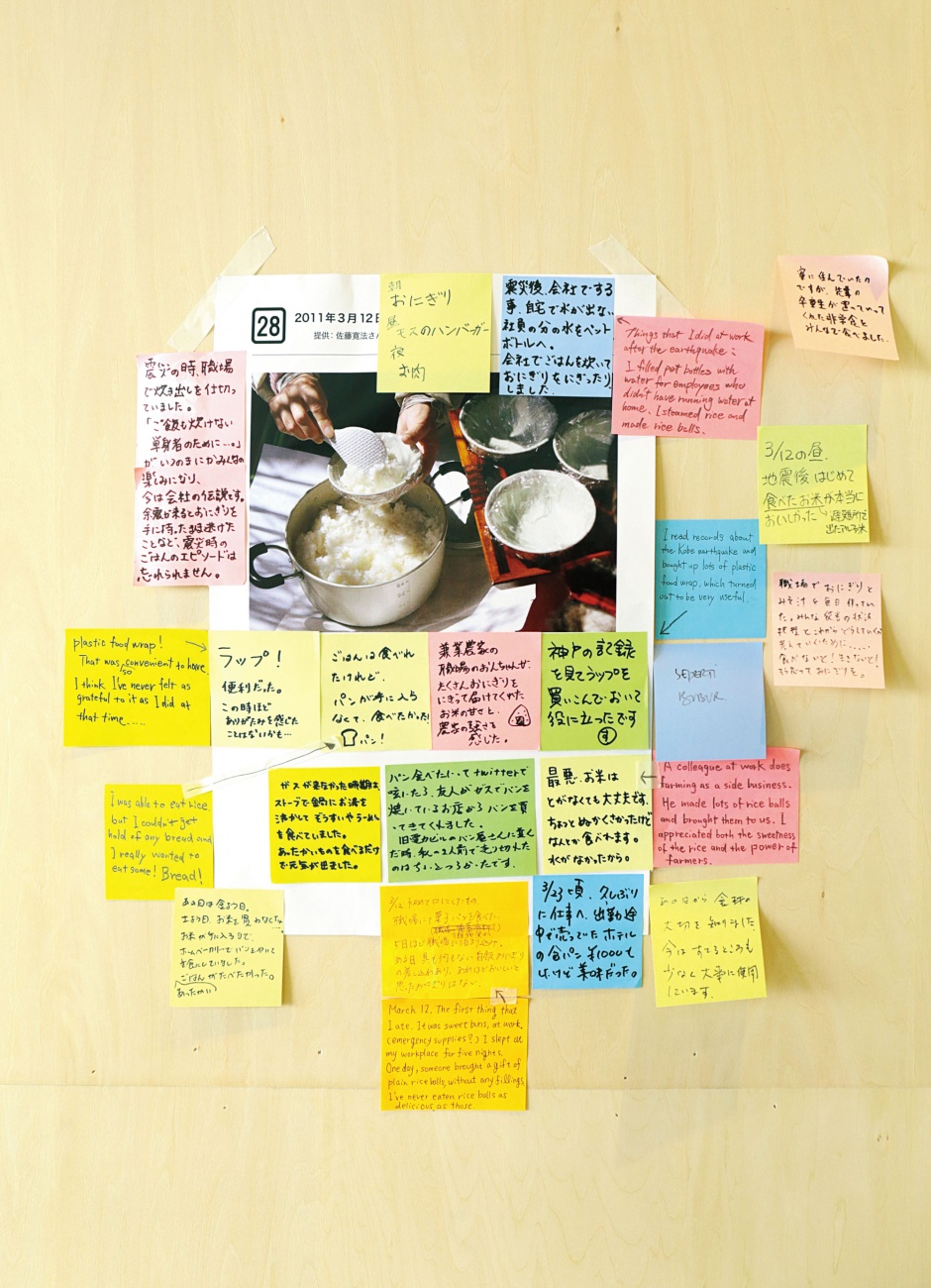vol.
012
MARCH
2016
vol.012 / Special
Unseeing eyes
Sari Hayashiguchi|Shiho Fukuhara|Kenji Kai|Hisashi Kitano|Kunihiko Morinaga|Norimizu Ameya|Nao Tsuda
Bees and cabbage white butterflies can see ultraviolet rays; pit vipers can see infrared rays.
If we had an eye transplant from another organism, we would probably live in an entirely different world.Apparently by sensing things we cannot see, we can sometimes visualize them.
The outer space, life, distance, consciousness, words, time: six people turned their eyes towards these.
We’re talking about seeing the unseen world.
Sari Hayashiguchi|Shiho Fukuhara|Kenji Kai/Hisashi Kitano|Kunihiko Morinaga|Norimizu Ameya|Nao Tsuda
Distance
Retracing history, bridging gaps
Kenji Kai/Hisashi Kitano

Kenji Kai has worked on numerous culture-related projects at Sendai Mediatheque, a cultural institutions that features galleries, libraries, and more. Kai says that the experience of the Great East Japan Earthquake got him thinking about the distance between people.
“In Sendai, even, the recovery efforts in urban areas and coastal areas progressed at different speeds — and that gap was bigger than the actual physical distance separating the communities,” Kai says. “People generally hesitate to talk about their own experiences because they know that there are others who’ve been through worse. That kind of restraint keeps people from coming together. Knowing that could happen in the aftermath of 3.11, I felt like I had to find a way to archive those personal experiences for the good of the community.”
Photos courtesy of Sendai Mediatheque and NPO 20th Century Archive Sendai
Photo: Hironori Sato
About two months after the Great East Japan Earthquake struck, Kai opened the “center for remembering 3.11” to support citizens and professionals record the disaster in different ways, publish and exhibit records online, and take other steps toward archiving the 3.11 experience. At the center, one of the main goals for every project is preserving the raw, gritty nature of the memories — not toning them down. Hisashi Kitano, who runs the center with Kai, says that trying to make all the information as accurate, uncomplicated, and accessible as possible actually robs it of a lot of its power.
“Unfiltered noise and static give people a fuller, multifaceted perspective on what disasters are all about, I think,” Kitano explains. “The real value of a recorded experience lies in how the observer perceived it on an individual level. Media reports and academic research can’t deliver that kind of quality — only ‘cultural projects’ like the ones we organize can.”
It’s been five years since 3.11. As time passes, Kai is starting to see how the center goes beyond just recording and disseminating information. “No matter how disconnected a community gets, disasters always bring people together. You can’t make it out of a big, devastating challenge like without any help — you have to reach out. That need, I think, is one of the things that make human society such a deep, rich dynamic,” Kai says. “Archiving is a cultural initiative that connects us with the ways we used to go about our lives. Reflecting on the recovery effort and the events that have shaped our experiences opens our eyes to the future — and helps shrink the imperceptible distance between us.”
Editing & Written by Rina Hirabayashi / Playce
Translation: Office Miyazaki, Inc.



